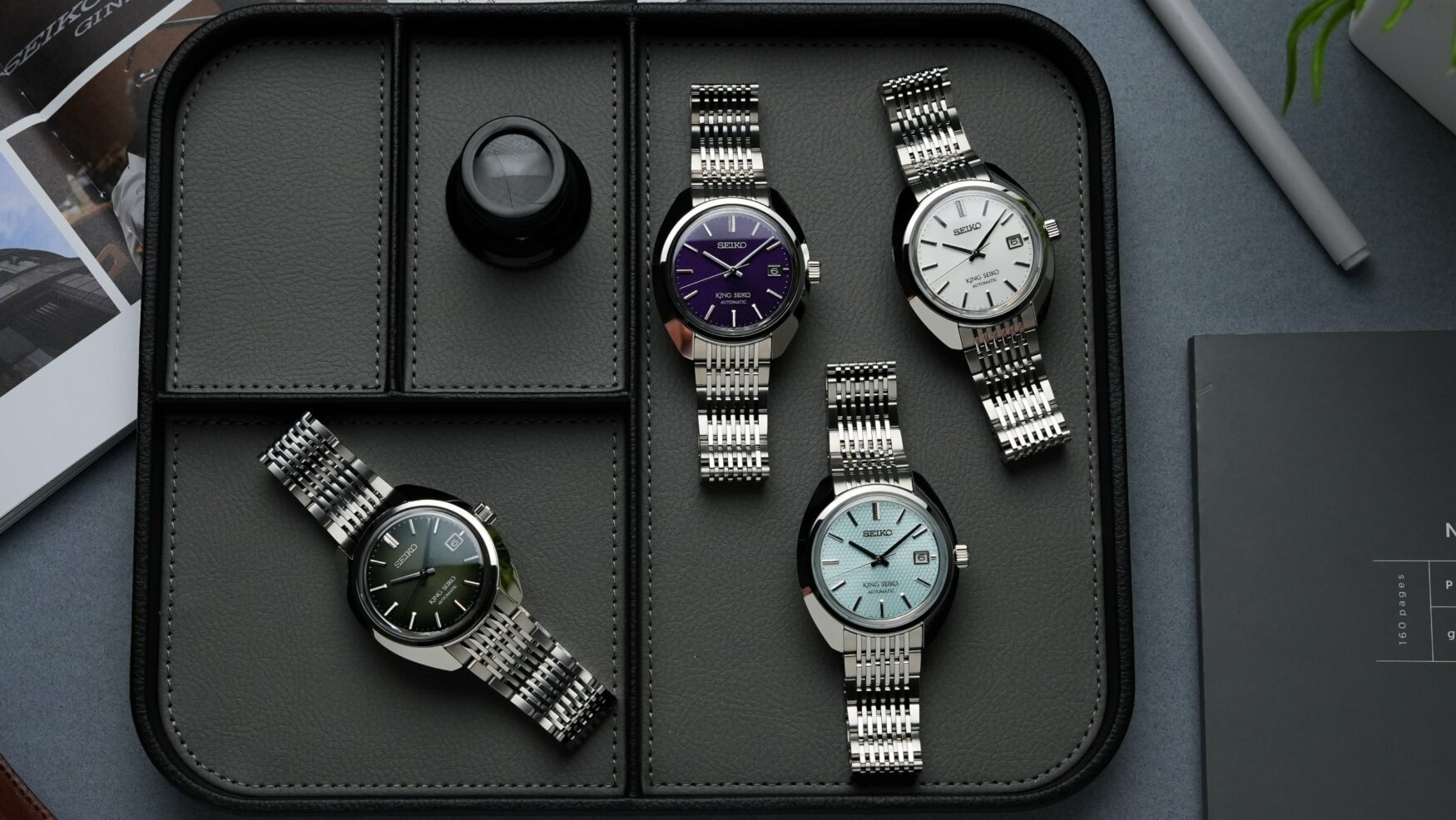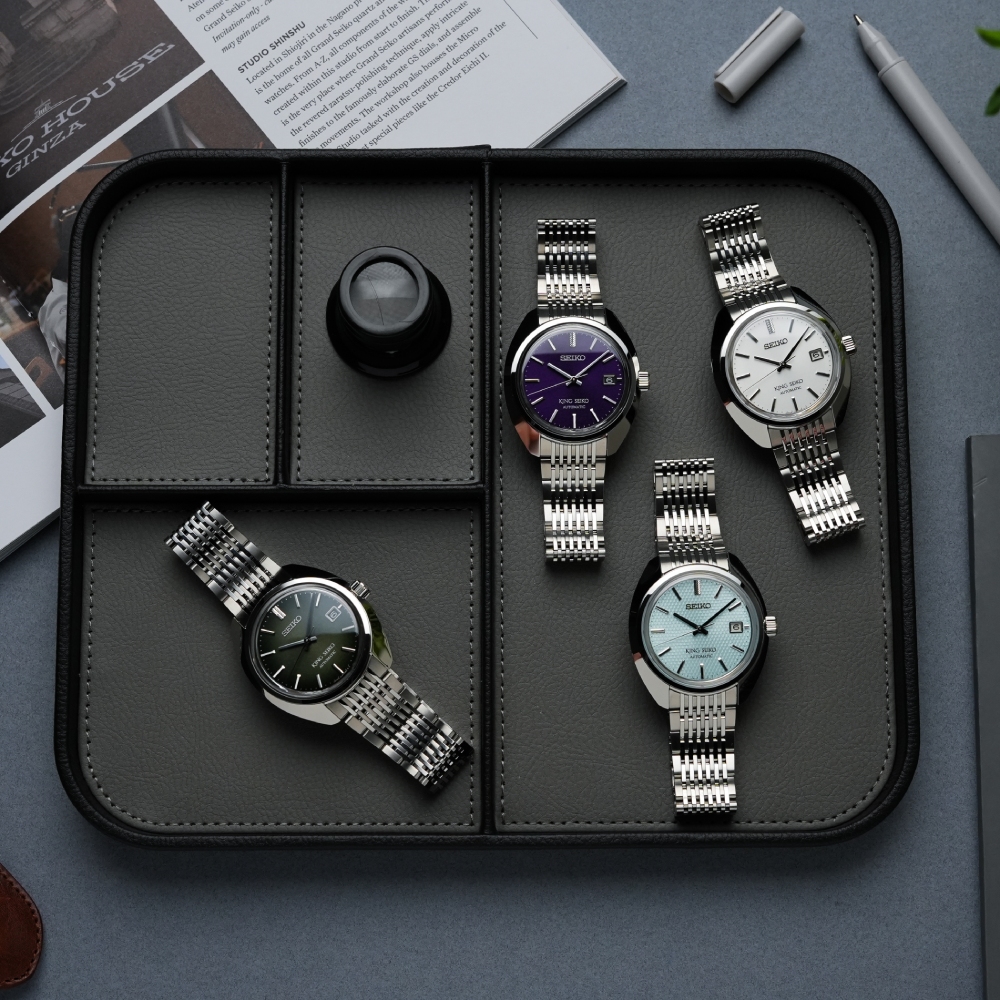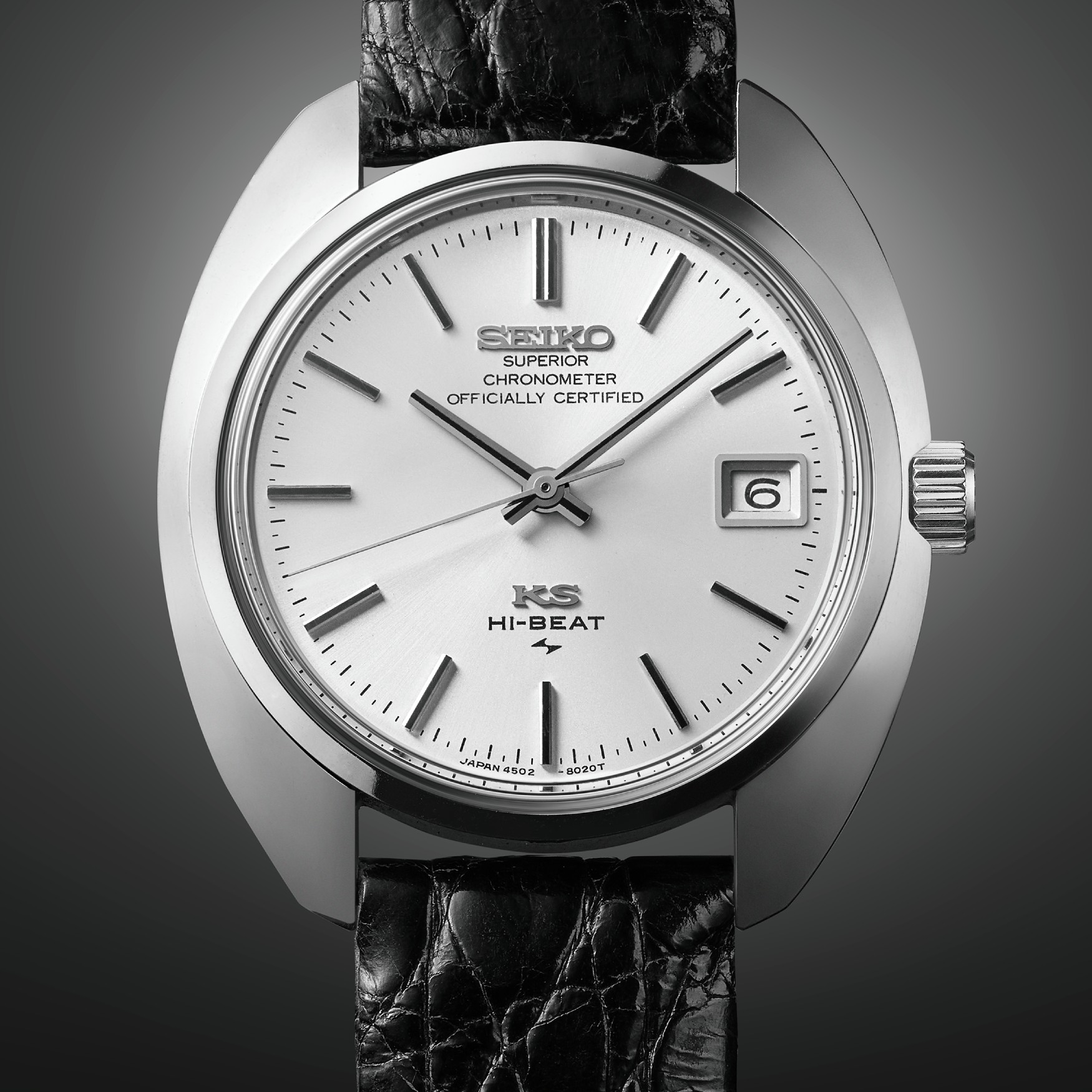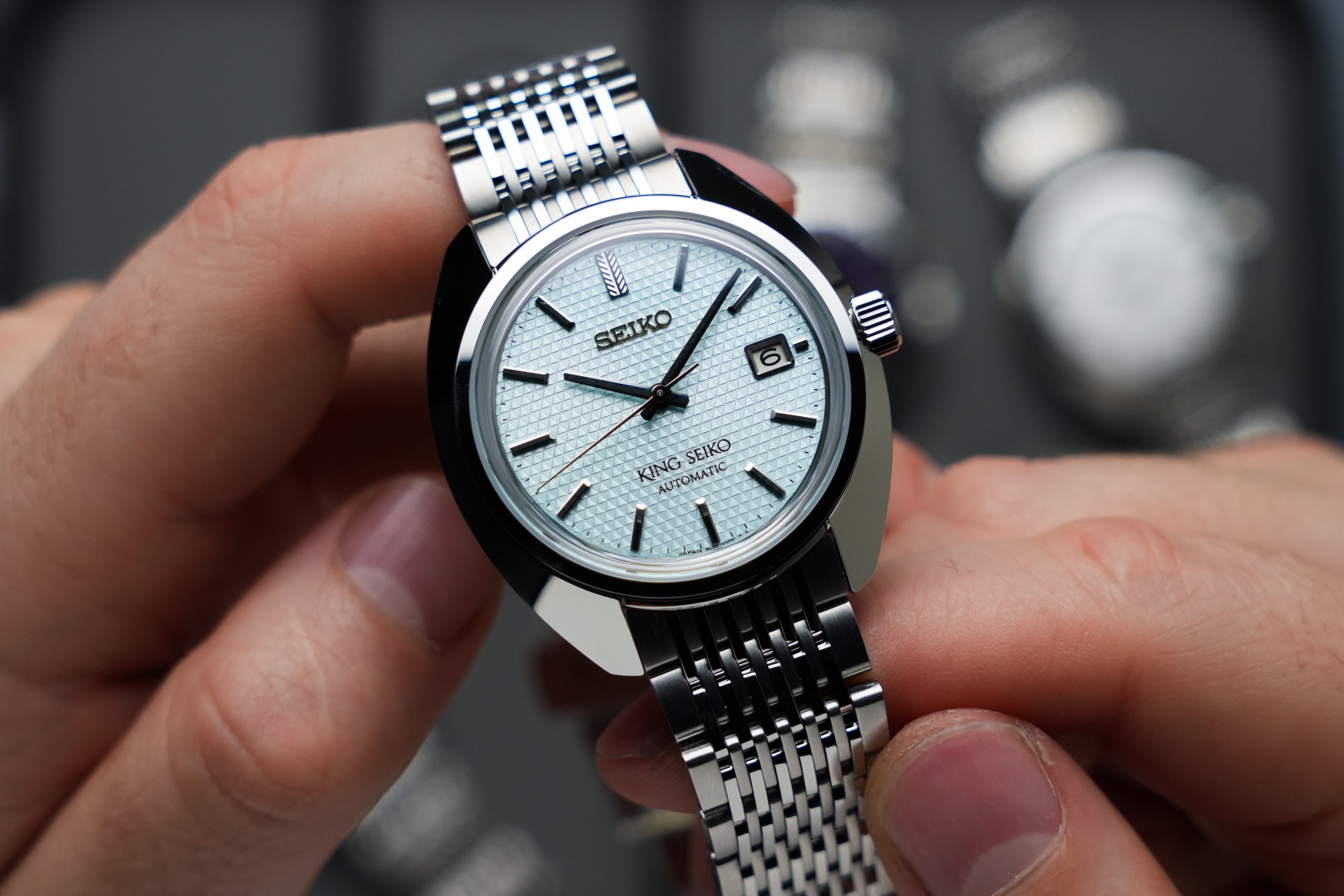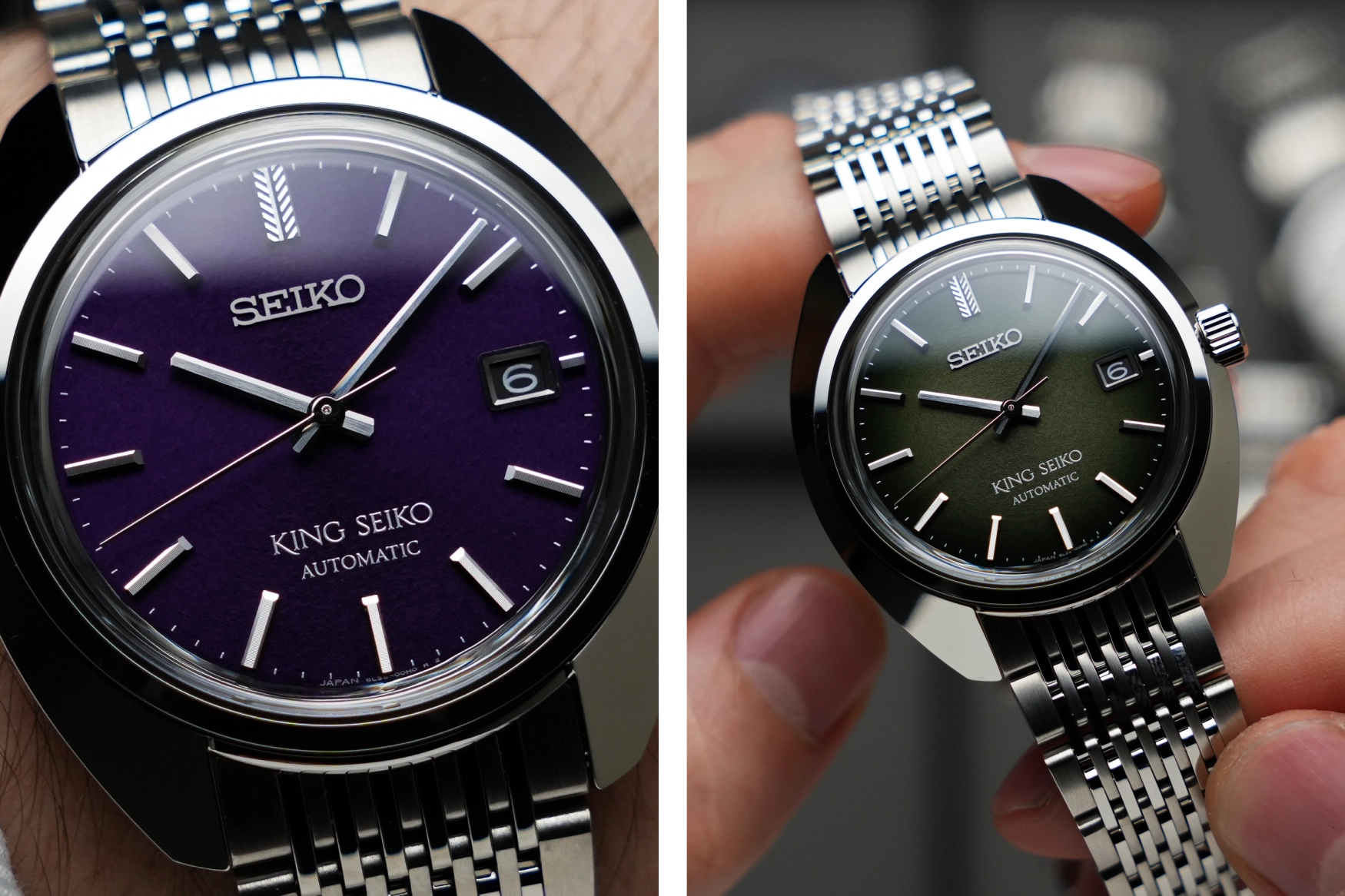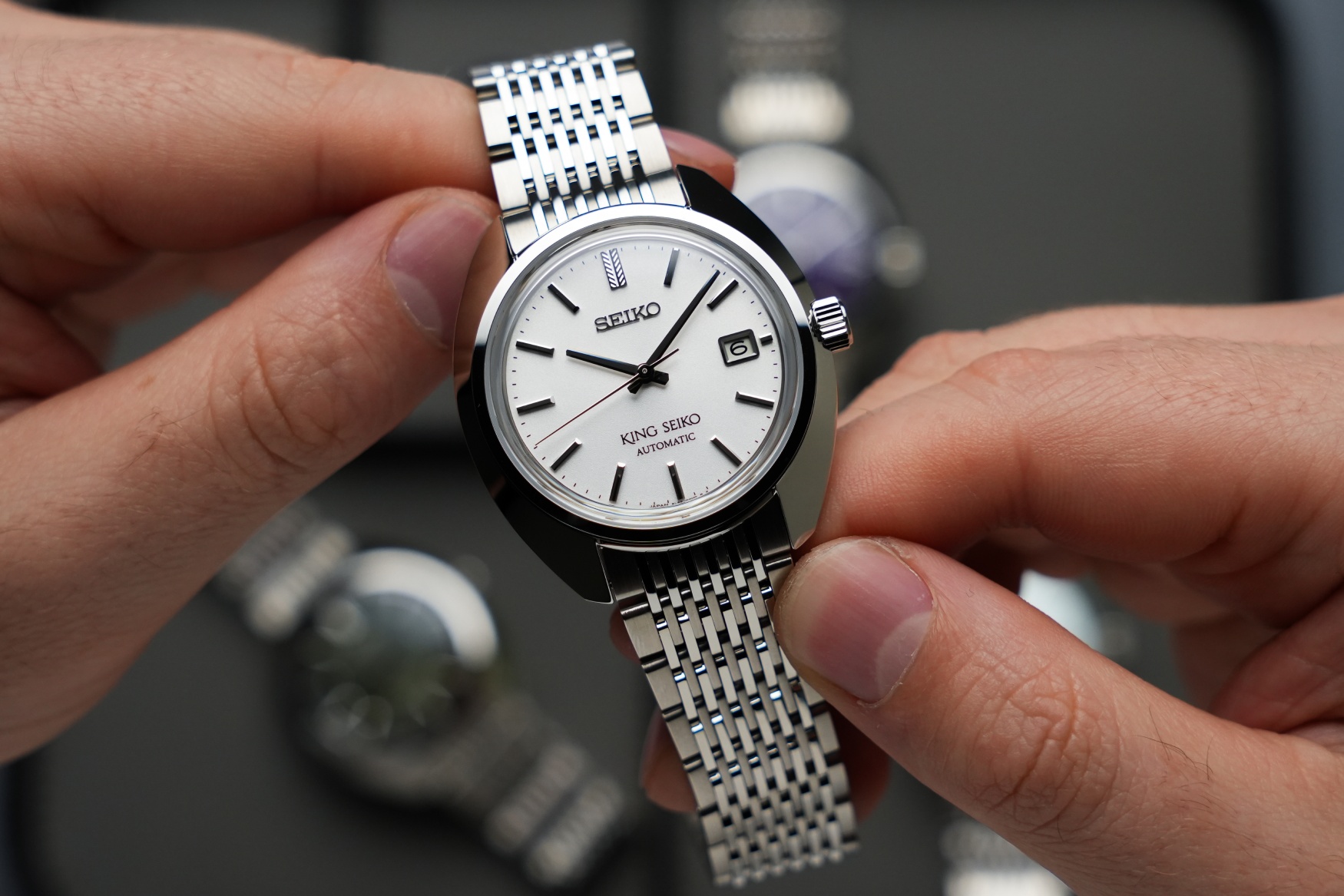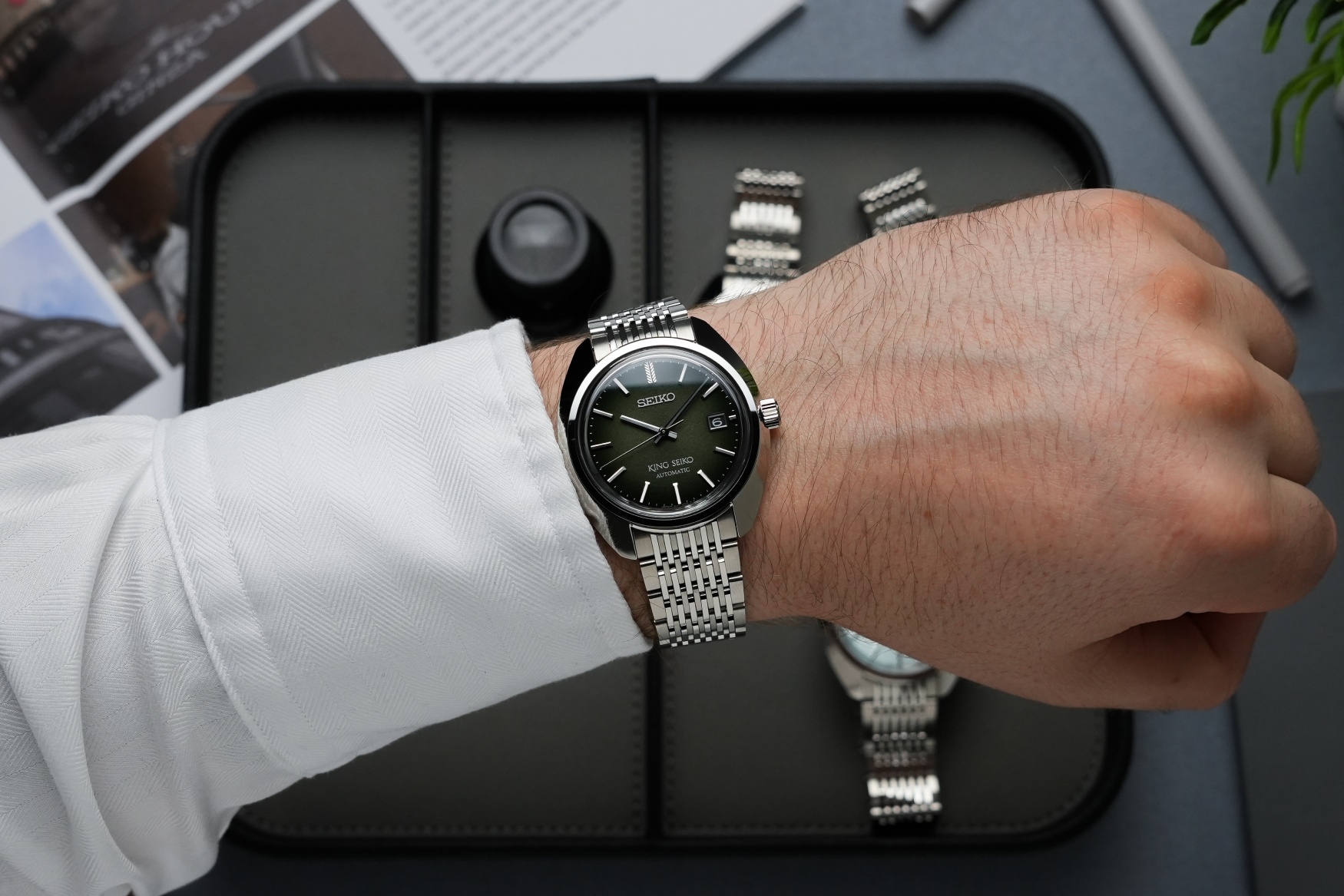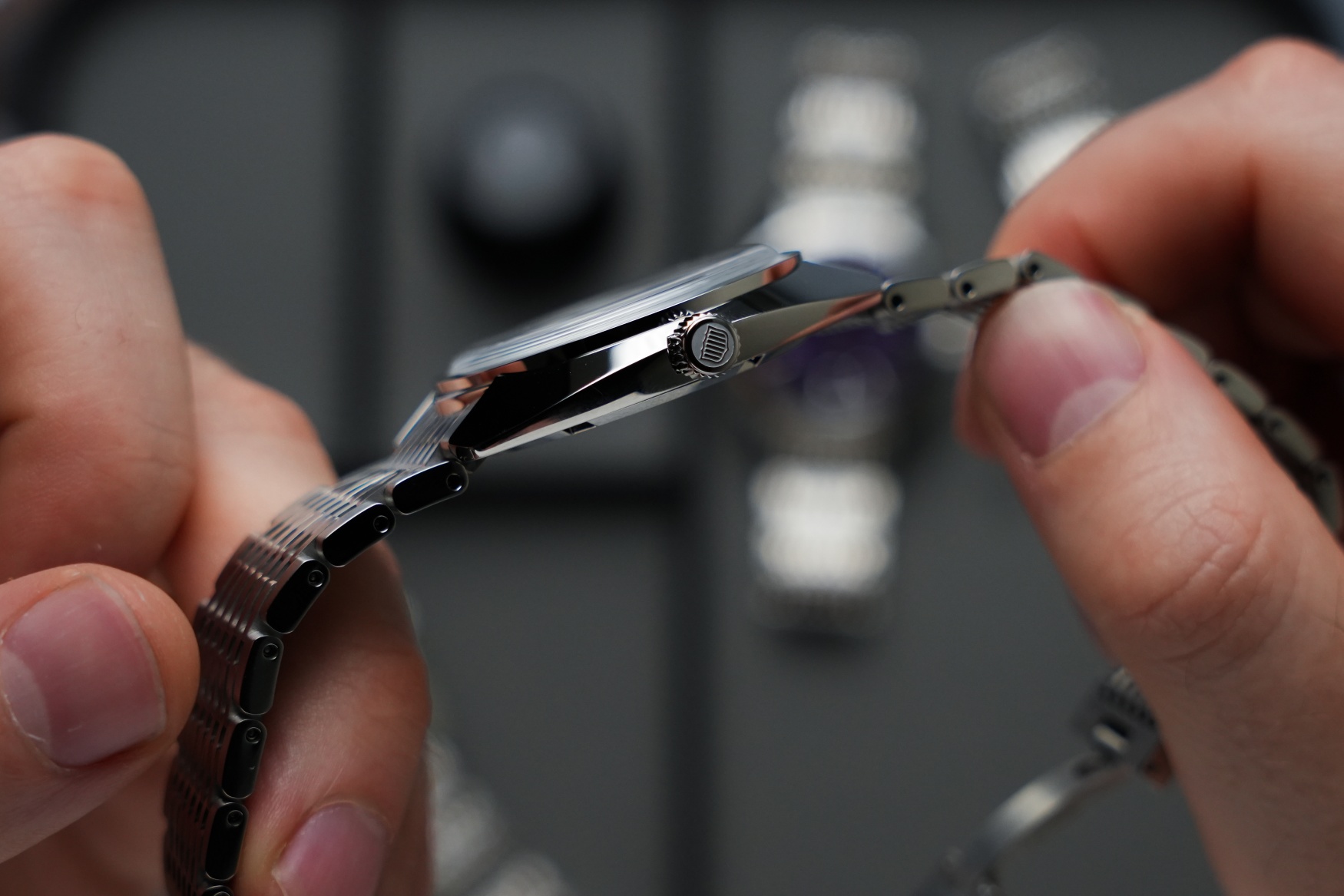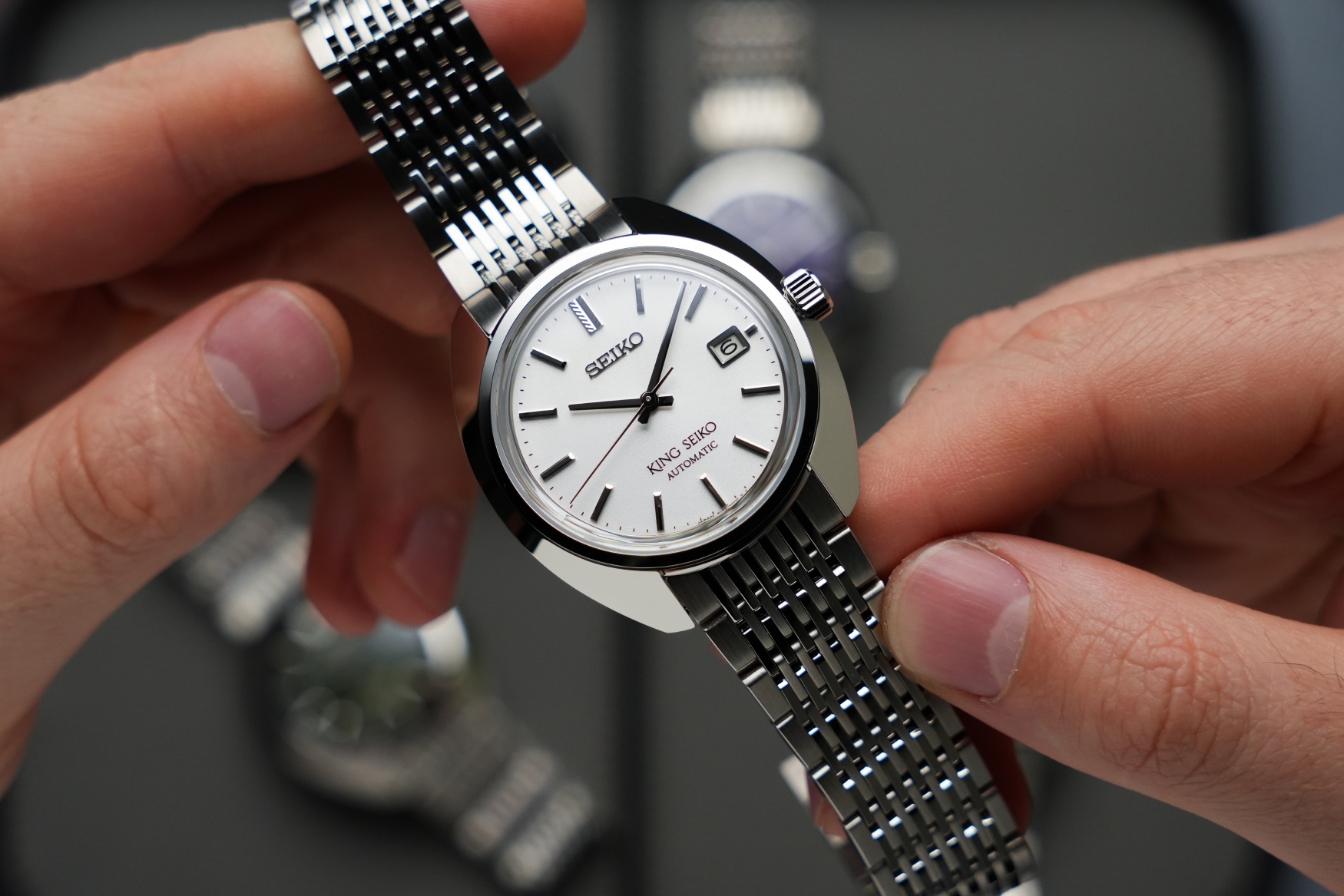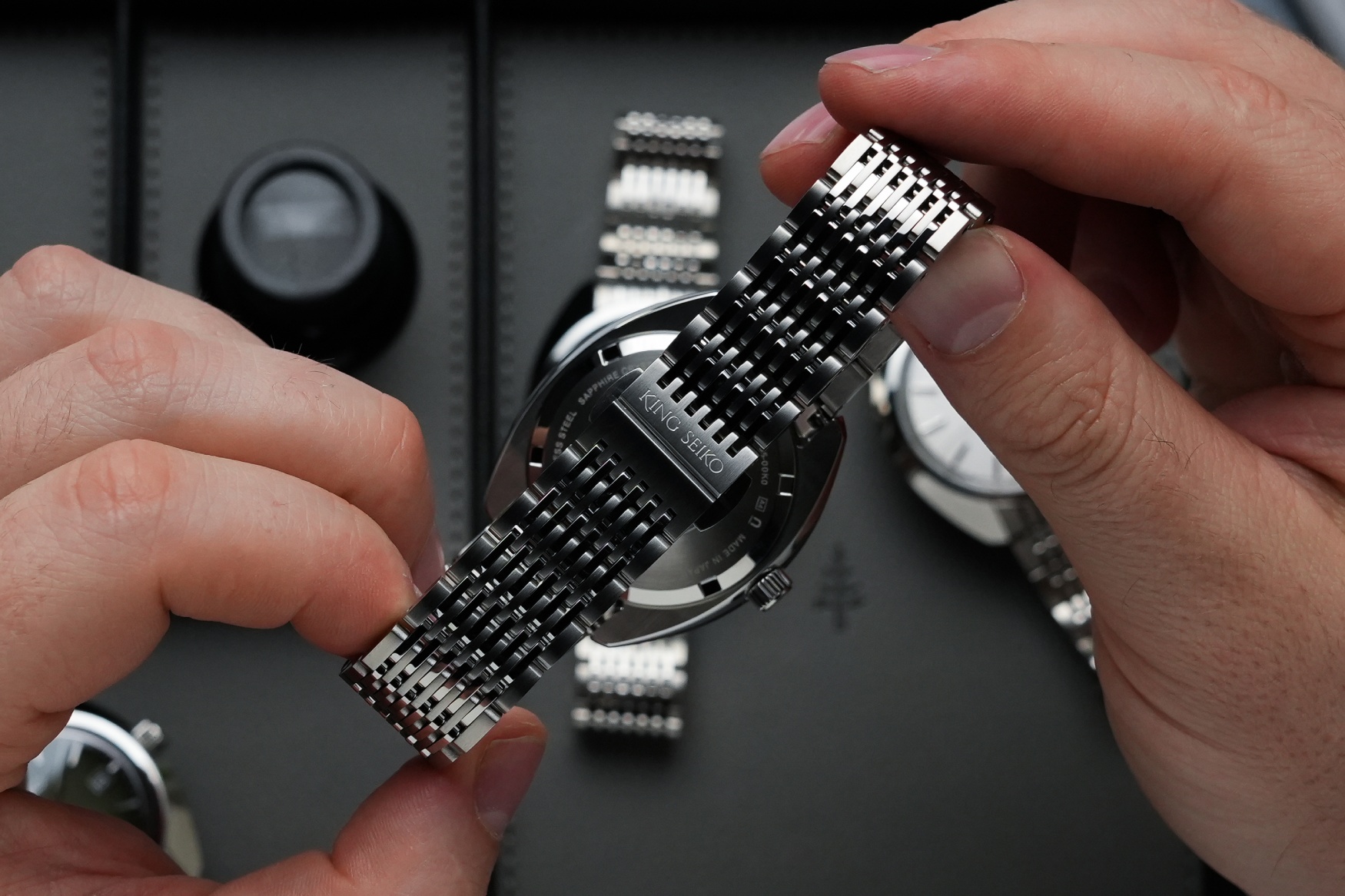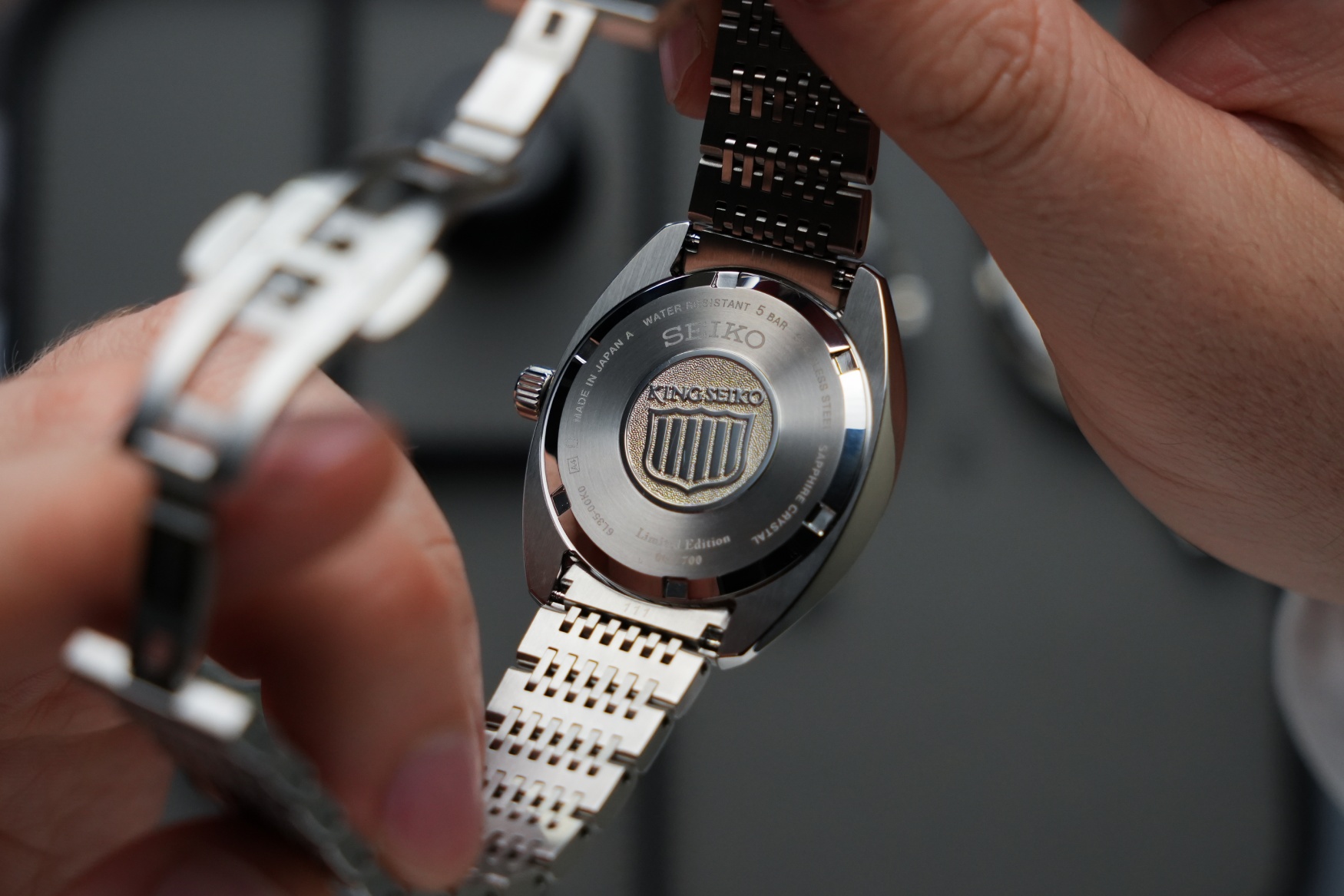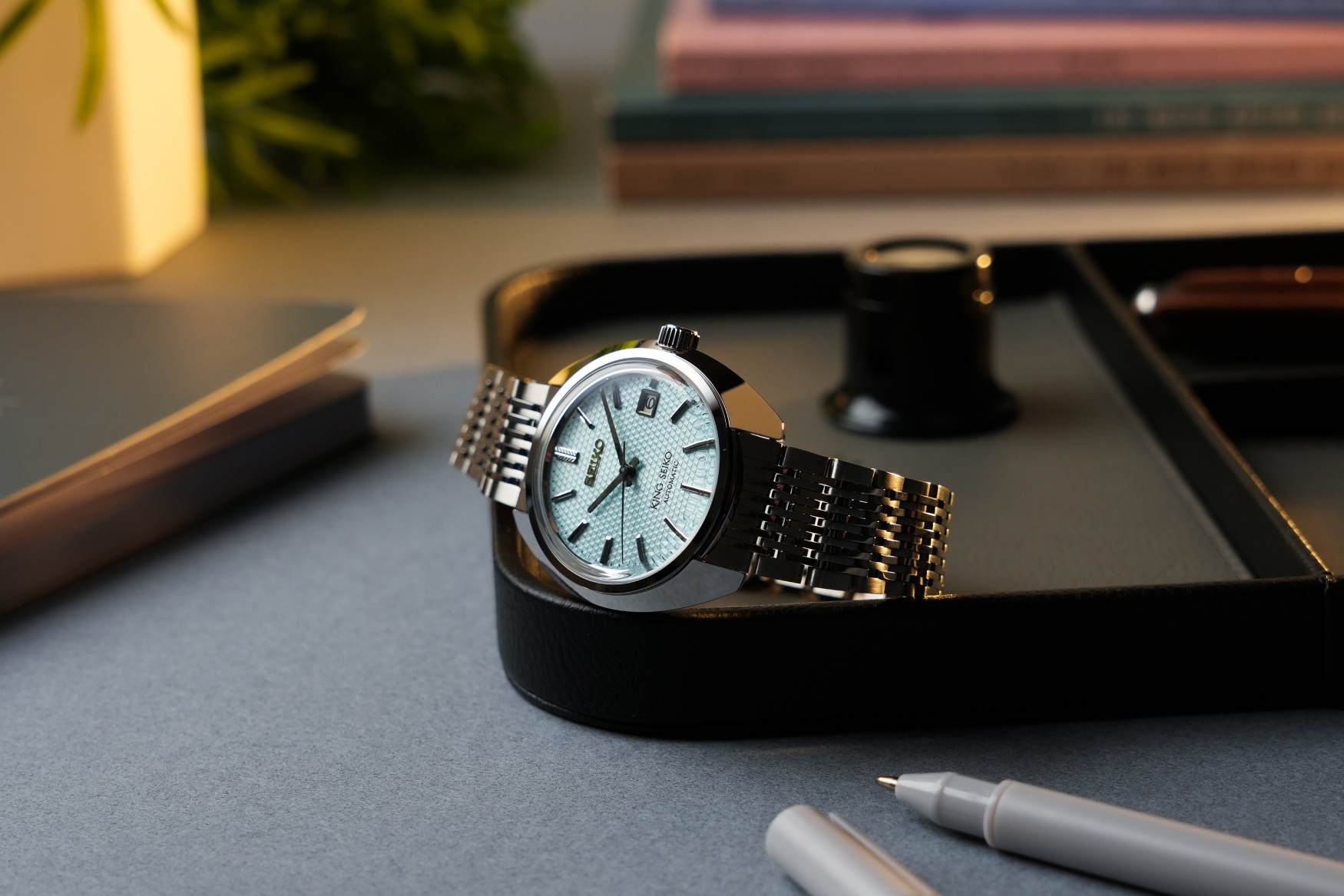Seiko revisits the summer of ’69 with the King Seiko KS1969
Borna BošnjakAs if closely following the evolution of the original King Seiko sub-brand, Seiko restarted it all with the brawny 44KS case, and is now following up with the softly contoured lines and wide, polished surfaces of the 45KS. The reason why? To launch the new King Seiko KS1969 collection, comprising of four new references paying homage to one of the best King Seiko models of the past. With slim cases sitting under 10mm, compact lug-to-lug dimensions, and dials worthy of a modern Seiko, there’s a lot to like with the new KS1969 (if you’re a little confused on where King Seiko stacks up, you’re not alone – so we made a guide), but before we dive into the details, let’s see where the inspiration comes from.
The best King Seiko had to offer
King Seiko was reintroduced into the main Seiko collection in 2020 as the highest-end option when it comes to the brand’s vintage-inspired dressy options. It was on-par with the more premium Presage offerings in terms of movements, but going for an aesthetic inspired by Seiko’s back catalogue. While the brand used one of the first King Seiko models (44KS 44-9990) from the mid-1960s to revive the King Seiko name, the new KS1969 collection focuses on the next generation, the 45KS.
More specifically, it takes the 45KCM 4502-8010 as its main inspiration, notable for a few reasons, one of which is that it’s one of the last great King Seiko models of its time. For starters, the 45KS was the last hand-built generation by the Daini Seikosha company, and the last to use a Daini 36,000vph movement. The Calibre 4502A featured hacking seconds, instant date changes and quick-set correction, and was chronometer-certified alongside its high beat rate – essentially the Rolls-Royce of Seiko movements at the time.
The dials
Dials are commonly the stand-out feature no matter the (Grand) Seiko we’re talking about, and the same goes for the KS1969. Most eye-catching is certainly the limited-edition SJE115, with a pattern Seiko says evokes a “rising dragon”. I’m not totally sure about that inspiration, but what I do know is that it’s stunning. The blue-green tinge is a great match for the shadow play the small triangles give off, and thanks to the faceted hands and indices, legibility isn’t as big of an issue as I would’ve thought. A curious stylistic choice is the applied, gold Seiko logo. I’m sort of on the fence about whether I’d prefer if it stayed silver, though it’s certainly a personal preference.
The vibrance of the purple and green dials is muted by the mottled texture meant to represent washi paper. The green is particularly attractive, with a further gradient finish that darkens towards the minute track, making the white-on-black date wheel even better-integrated.
Finally, the silver is most faithful to the original 45KCM, though with some important differences. For starters, Seiko has removed much of the dial text found on the 45KS, which is highly unusual in a world where spec sheet dials are becoming all the more common. Another differentiator are the hands and indices. The KS1969 goes for a simpler handset, and retains the “feathered” look of the double index at 12 o’clock introduced with the KS revival, a feature I’m a big fan of.
The case
If you know modern Seiko, you’ll know that the dials will be good, so it’s not really a surprise that they are. What is a really pleasant surprise, is the case of the KS1969. Admittedly, the 39.4mm diameter is almost 3mm larger than the 45KCM, but the lug-to-lug of 43.6mm and a thickness of just 9.9mm mean that it’s excellent on-wrist. The barrel shape does mean it’ll wear a bit larger than those dimensions suggest, but it’s all kept reined in by the compact lug-to-lug. I’d hazard a guess that many fans of the original KS will be happy with these dimensions, though it’s worth noting that this isn’t a case of a modern watch wearing like a vintage one. As a result of the larger size and modern build quality, the KS1969 is quite a bit beefier.
Most impressive is the profile, which at 9.9mm really makes the most of the slimline movement, something which the earlier KS models weren’t able to capitalise on. In fact, it’s even thinner than the vintage models it was inspired by – now that’s a rare occurrence.
Design-wise, the KS1969 comes from an era where Daini was going through a period of change. During the late ’60s and early ’70s when the 45KCM was around, Taro Tanaka established Seiko’s “Grammar of Design” that most famously informed the shape of the 44KS, and later the 44GS. But not all the watches made at the time followed Tanaka’s brief. The KS1969’s barrel shape and swooping, rounded lugs are a far cry from the flat, wide, mirror-polished geometric shape that the “Grammar of Design” is known for.
The bracelet
I know that the new case shape is probably the biggest bit of news for the KS1969, but the nerd in me is excited about the bracelet, too. Modelled after the ref. 5606 bracelet fitted to King Seiko models in the ’60s, this pseudo-beads-of-rice is a great stylistic choice, and it integrates into the case well, which has been a source of complaint for some Seikos.
The small links are really comfortable and articulate very well, and while the butterfly clasp doesn’t leave much room in terms of adjustability, the small size of the links helps achieve a close fit.
The movement
The Calibre 6L35 is the biggest differentiator from the KS1969’s vintage inspiration. Whereas the original was manually wound and chronometer certified, the 6L35 is automatic, as the dial text suggests. It’s impressively thin for a full-rotor automatic at just 3.7mm, and offers a 45-hour power reserve beating at 4Hz. It’s essentially Seiko’s competitor to the ETA 2892, sitting at the upper end of its offering without being derived from a Grand Seiko movement of some kind. I would’ve loved to see Seiko push the envelope with a high-beat, chronometer-certified movement as a true 45KCM homage, but the 6L35 makes sense considering the King Seiko sub-brand positioning today.
The verdict
When several Seiko samples arrived at the Time+Tide offices, the KS1969s were the ones I naturally gravitated towards. If I remember correctly, the words I used were “I want one”. The 45KS case is fantastic on-wrist thanks to its slimness and compact lug-to-lug, and the dials are another show of Seiko’s evolution over the years as a dial master. The limited-edition SJE115 would probably be my pick of the bunch, closely followed by the silver SJE109, simply for nostalgia reasons.
More than US$3,000 for “just a Seiko” does seem questionable on paper (though I truly hope people have moved on from saying things like that), but putting it in the context of the modern King Seiko collection, these are a bit of a bargain (even more so in Australian dollar context). Take the SJE091, the slimline KSK model released last year. It houses the same movement, a thicker case, and is US$200 (or A$550) more expensive. That makes the KSK1969 a no-brainer for me when choosing a modern KS.
Though the dials are cleaned up, having the “HI-BEAT” and “CHRONOMETER” text would make more sense for a top-end King Seiko considering the historical model it was based on. The slim dimensions and reliable performance of the 6L35 are commendable features, but it’s as far as Seiko can go without encroaching on Grand Seiko territory. While the finish of the KS1969’s case and dials are worthy of the modern GS logo, I don’t think we’ll be seeing chronometer-certified KS models any time soon – but if you can get past this deviation from historical accuracy, you’ll get a great watch on your wrist.
King Seiko KS1969 SJE109, SJE111, SJE113, and SJE115 pricing and availability
The King Seiko KS1969 collection is available now, while the SJE115 100th anniversary model is a limited-edition of 700 pieces. Price: US$3,100, A$4,650
| Brand | Seiko |
| Model | King Seiko KS1969 |
| Reference | SJE109 SJE111 SJE113 SJE115 |
| Case Dimensions | 39.4mm (D) x 9.9mm (T) x 43.6mm (LTL) |
| Case Material | Stainless steel |
| Water Resistance | 50 metres |
| Crystal(s) | Box-domed sapphire |
| Dial | Brushed silver Washi paper purple or green Triangle, “dragon scale” pattern light blue |
| Strap | Multi-link steel bracelet, butterfly clasp |
| Movement | Seiko 6L35, in-house, automatic |
| Power Reserve | 45 hours |
| Functions | Hours, minutes, seconds, date |
| Availability | July 2024, SJE115 limited to 700 pieces |
| Price | US$3,100 A$4,650 |




